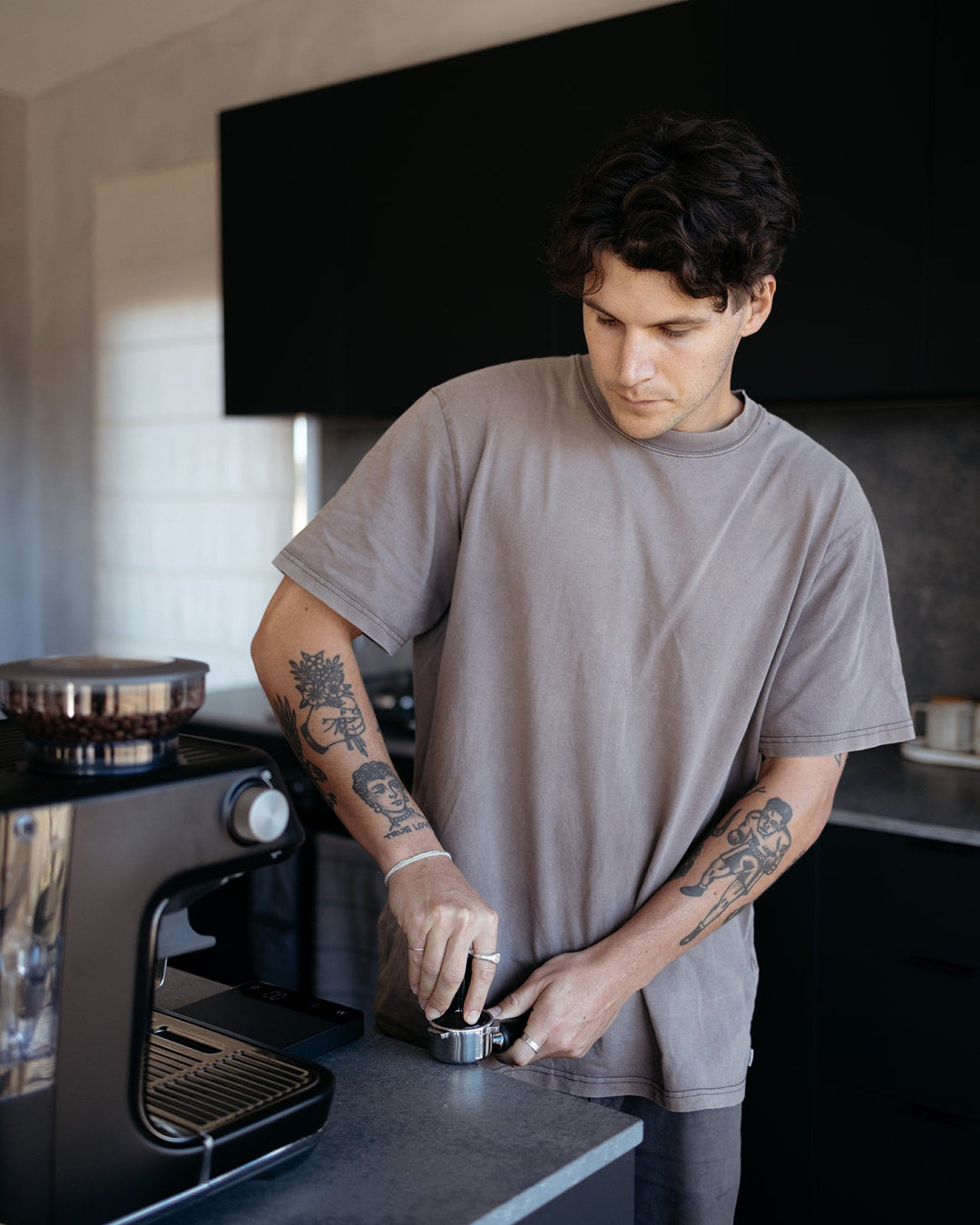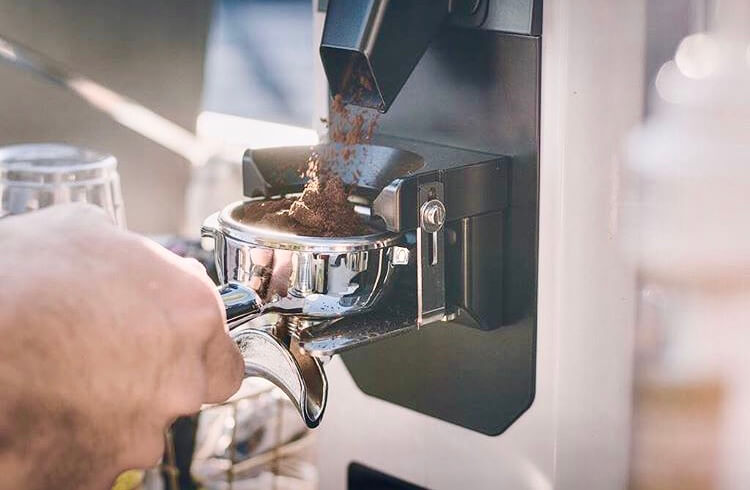Understanding Coffee Beans: the Journey From Coffee to Blended Coffee Beans

The Beginnings of Coffee: A Global Perspective
While you might think of coffee as a modern staple, its beginnings map back centuries, intertwining with cultures across the world. The story starts in Ethiopia, where legend states a goat herder called Kaldi uncovered the stimulating results of coffee beans after discovering his goats frolicking vigorously after consuming them.
As trade courses increased, coffee made its means to Europe in the 17th century, rapidly getting appeal. It transformed from a magical beverage into a daily routine, inspiring celebrations and intellectual exchanges. Each society included its special spin to coffee prep work, enhancing its background. This global journey highlights just how coffee connects us, going beyond borders and uniting diverse practices via a straightforward bean.
Farming and Harvesting of Espresso Beans
As coffee's journey developed, the focus moved to the farming and harvesting of details bean ranges, especially those made use of for espresso. You'll locate that espresso beans usually come from Arabica or Robusta plants, each offering unique tastes. The perfect expanding problems include high altitudes and rich, well-drained dirt, which improve the beans' quality.
During the harvest, selecting approaches differ. Timing is essential; you want to gather when the cherries get to peak ripeness for maximum flavor.
As soon as gathered, the beans are planned for processing, which is vital in identifying their last preference. Comprehending the farming and gathering procedures gives you understanding into what goes into your favorite coffee, enriching your recognition for every mug.
Handling Methods: From Cherry to Bean
Currently that you have actually discovered about collecting espresso beans, allow's discover just how those cherries change right into the coffee beans you like. You'll see exactly how different harvesting techniques influence taste, followed by the important steps of fermentation and drying. Ultimately, we'll damage down the milling and grading process that determines your coffee's top quality.
Collecting Techniques Explained
When it comes to coffee, recognizing harvesting techniques is vital, because they straight impact the flavor and quality of the beans you delight in. There are two primary methods: selective picking and strip picking. Careful selecting involves hand-picking only ripe cherries, ensuring you obtain the most effective high quality beans. This approach commonly leads to a richer flavor profile, though it's even more labor-intensive. On the various other hand, strip selecting ways gathering all cherries at the same time, no matter ripeness. While it's quicker and cheaper, this can result in a mix of flavors, influencing the end product. Inevitably, the choice of harvesting strategy can considerably influence your coffee experience, so it deserves understanding just how those beans made it to your mug.
Fermentation and Drying
After gathering, the next actions in processing coffee beans play a considerable duty fit their taste. You'll locate that fermentation is crucial, as it assists break down the mucilage bordering the beans, boosting their taste account. Depending upon the method, this procedure can last from a few hours to several days, with differing results based upon temperature and moisture.
As soon as fermentation is full, drying out complies with, which is equally vital. You can pick from mechanical or sun-drying drying approaches. Sun-drying permits the beans to soak up tastes from the atmosphere, while mechanical drying assurances consistent wetness degrees regardless of climate. Appropriate drying out is vital to protect against mold and mildew and protect the beans' quality, inevitably affecting your cup of coffee.
Milling and Grading Refine
As fermentation and drying out set the stage for taste development, the milling and grading procedure guarantees that just the most effective coffee beans make it to your cup. This stage entails removing the external layers of the coffee cherry, including the parchment and husk. After milling, the beans are sorted by dimension and weight, making sure an uniform top quality. You'll find that grading aids determine problems and classify beans, which influences flavor and scent. Top quality beans get a greater quality, leading to a richer coffee experience. When rated, the beans are all set for packaging and delivery, preserving their one-of-a-kind features. This careful process is crucial for supplying the remarkable preference you appreciate in every sip of your favored mixture.
Roasting Methods: Opening Taste Potential
When you roast coffee beans, the technique you choose can drastically affect the flavor profile. Understanding the relationship between time, temperature, and toasting methods is vital to disclosing the potential of your brew. Let's explore exactly how these components integrated to create the ideal mug.
Roasting Approaches Explained
While you might assume that all coffee roasting approaches generate the same results, the truth is that each technique discloses unique flavor capacities in the beans. Drum toasting uses a revolving drum to equally disperse warmth, improving caramelization and creating a well balanced flavor. Air roasting, on the various other hand, circulates warm air around the beans, advertising a lighter roast with noticable acidity.

Effect on Taste Profile
Different roasting approaches not only affect the procedure but likewise considerably affect the flavor account of the coffee beans. Dark roasts, on the other hand, bring out vibrant, great smoky tastes, in some cases concealing the bean's special attributes. Recognizing these nuances helps you appreciate the virtuosity behind your cup of coffee, boosting your general experience with every sip.
Time and Temperature Factors
To launch the complete flavor potential of coffee beans, both time and temperature level throughout the toasting process play considerable duties. When roasting, you'll discover that greater temperatures can swiftly create flavors, but if you hurry it, you might finish up with charred notes. On the other hand, lower temperature levels permit a much more steady flavor development, showcasing the beans' one-of-a-kind attributes.

Timing is simply as vital; prolonging the roast too long can result in a loss of acidity and illumination, while as well short a roast may leave the beans underdeveloped. Locating that wonderful area requires technique and experimentation. By changing these variables, you can disclose the rich, intricate flavors hidden within each bean, producing a genuinely impressive coffee experience.
The Art of Blending: Crafting One-of-a-kind Coffee Accounts

Begin by picking a base coffee that offers a strong foundation. Pick complementary beans to enhance details taste notes. An intense Ethiopian bean can bring fruitiness, while a rich Brazilian coffee includes body. Trial and error is essential-- don't be afraid to readjust proportions till you discover your ideal profile.
As you mix, bear in mind that each combination narrates. You're not simply making coffee; you're developing an experience. So, take your time, taste frequently, and enjoy the trip of finding your signature mix.
Developing Approaches: How Preparation Affects Flavor
Blending coffee opens up a domain name of flavor possibilities, but how you brew that blend can significantly influence your final mug. On the various other hand, a pour-over highlights the coffee's clearness and brightness, ideal for showcasing fragile notes.
Espresso, with its high pressure, produces a focused shot that accentuates sweet taste and crema. If you choose a lighter mixture, take into consideration a cold brew approach; it produces a smooth, less acidic preference.
Changing variables like water temperature level, grind dimension, and brew time can transform your coffee's account. Embrace the art of developing to discover the tastes concealed in your coffee blends.
The Future of Coffee: Sustainability and Innovation
As the coffee sector develops, sustainability and development are coming to be necessary for resolving environmental obstacles and meeting customer demands. You'll see that more coffee firms are embracing environment-friendly techniques, from sourcing beans fairly to applying lasting farming methods. These shifts not only help the earth yet also boost the quality of the coffee you delight in.
You could see developments like biodegradable product packaging and water-saving developing approaches that decrease waste. Advanced technology, such as blockchain, is likewise ending up being preferred, making sure openness in the supply chain, which permits you to map your coffee back to its beginnings.
On top of that, investing in local Single Origin Espresso communities and supporting farmers with reasonable profession campaigns fosters a more lasting coffee environment. As you drink your next cup, keep in mind that your options can add to a brighter future for coffee. By choosing sustainable brand names, you're not simply delighting in a drink; you're making a positive impact on the globe.
Frequently Asked Questions
What Is the Difference Between Arabica and Robusta Beans?
Arabica beans are smoother, sweeter, and have a higher level of acidity, while robusta beans are stronger, extra bitter, and contain more caffeine. You'll notice these distinctions in taste and fragrance when making your coffee.
Just How Does Elevation Affect Coffee Bean Flavor?
Altitude influences coffee bean taste significantly. Greater altitudes create beans with brighter acidity and facility tastes, while reduced altitudes usually produce beans that are heavier and much less nuanced. You'll notice these distinctions in your mug!
What Are the Health And Wellness Benefits of Alcohol Consumption Coffee?
Drinking coffee can enhance your power, improve mental emphasis, and also improve physical efficiency. It's abundant in antioxidants, may reduce the threat of particular illness, and can advertise a healthier metabolic rate when consumed in small amounts.
Can Coffee Beans Be Reused for Brewing?
Yes, you can recycle coffee beans for brewing, yet the flavor may be weak. If you take pleasure in exploring, attempt recycling them in different methods, like cool brews or including to shakes for an additional kick.
Just how Should I Shop Coffee Beans for Quality?
To keep your coffee beans fresh, save them in a closed container in an amazing, dark area. Prevent exposing them to light, warm, or wetness, as these factors can promptly deteriorate their flavor and aroma.
Recognizing Coffee Beans: the Trip From Espresso to Blended Coffee Beans.
Currently that you've discovered about gathering espresso beans, allow's check out how those cherries change into the coffee beans you love.When you roast coffee beans, the technique you pick can dramatically influence the flavor account - Single Origin Espresso.While you could assume that all coffee roasting approaches produce the very same outcomes, the fact is that each technique discloses unique taste possibilities in the beans.Various toasting approaches not just influence the process yet also considerably impact the flavor profile of the coffee beans
Comments on “SOE Single Origin Espresso – Perfect for Precision Brewing Methods”